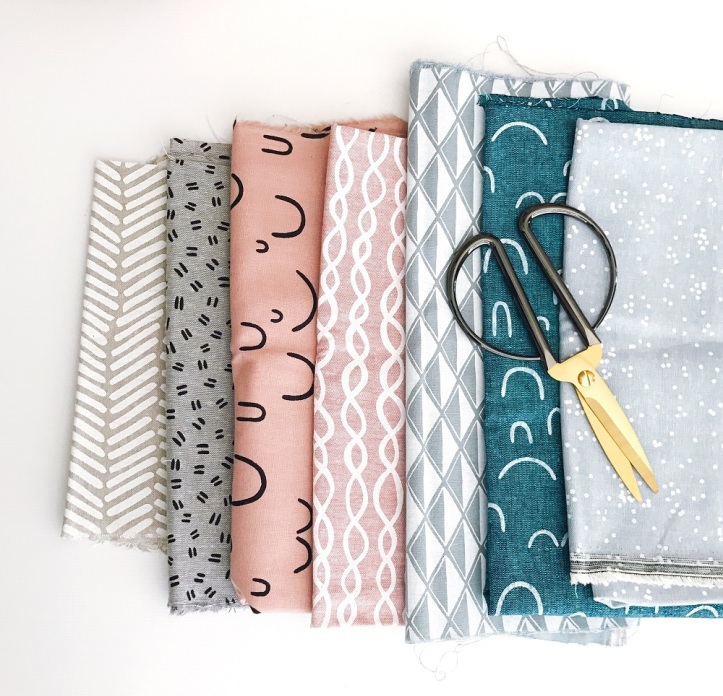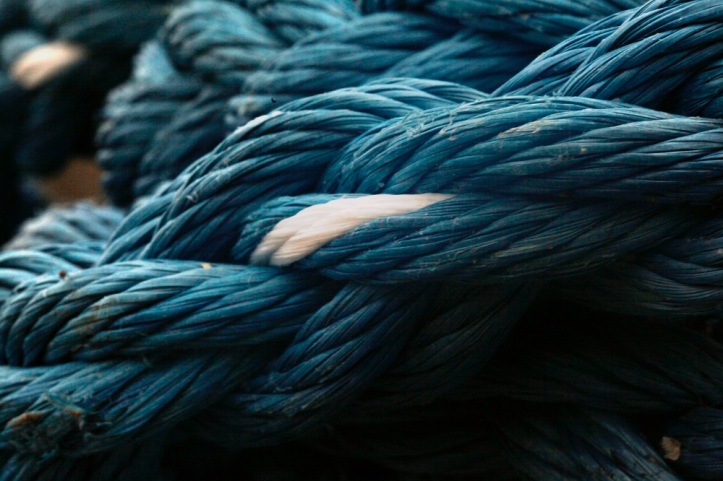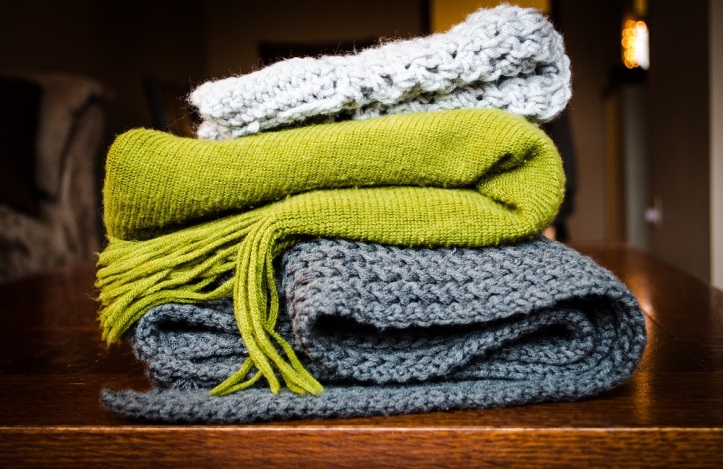
Building a sustainable wardrobe is no easy feat. In fact, on the Who Made My Clothes free online course that I’m doing, Osola De Castro, the co-founder of Fashion Revolution, said:
“I don’t think it’s possible to have a 100% sustainable wardrobe… But I think it is possible to make sustainable and ethical choices about all of the clothes that you have in your wardrobe.”
One way you can do this is to assess the materials that your garments are made of. Some materials are more sustainable than others. Here is a quick overview of those made from natural fibres rather than synthetic (man-made) ones. You’ll quickly see that just because something is natural does not mean it is automatically sustainable.
Please keep in mind that this is general information on an incredibly complex topic – as well as being one aspect among many of a sustainable wardrobe!
BAMBOO
The bamboo plant is very sustainable; it is fast growing, can be repeatedly harvested, enriches the soil it grows in, does not require fertilisers and pesticides, and doesn’t need a lot of water.
However, bamboo fabric is generally a type of viscose (see under viscose). When the bamboo cellulose is turned into fibre, bleach and acid is used. If the waste is not dealt with appropriately, it runs the risk of being released into the environment as significant pollution. Most bamboo materials are produced in China, which has lax environmental regulations, so this outcome is common.
A better option is bamboo lyocell, because its manufacturing process is more sustainable (see under lyocell).
COTTON
As much as 75% of our clothing contains some cotton (see the Ethical Consumer report on cotton). Although cotton is a natural fibre, it is one of the thirstiest clothing crops (10 000 litres of water are needed per kg of cotton – or 2 500 litres for a 250g cotton t-shirt), and it needs significant volumes of chemical fertilisers and pesticides. The pollution this causes has serious health consequences; the World Health Organisation estimates approximately 3 million pesticide poisonings happen worldwide per year, resulting in 20 000 deaths. Most of these are attributed to the cotton industry. The people affected are farm workers, who are commonly not given adequate protective clothing, and those living nearby who are exposed to the chemicals in run-off.
Small scale farmers often cannot afford the pesticides, and are quickly driven into debt – so much so that, according to a report by the Centre for Human Rights and Global Justice, every 30 minutes a farmer in India commits suicide due to pesticide debt.
Additionally, 65% of the world’s cotton is grown in countries using forced labour.
To avoid these serious pitfalls, rather opt for cotton that is organic (farmed free of chemicals), Fair Trade (workers are treated far better, being paid fair wages and given protective gear) or recycled (made from old clothes – however the cotton is degraded in the process, so must be mixed with new cotton to improve its strength and durability).

“According to the World Bank, 20% of water pollution globally is caused by textile processing, making it the second biggest polluter of freshwater resources on the planet. A full quarter of the chemicals produced in the world are used in textiles and it is also highly resource-intensive.” – Dirty Fashion
HEMP
Hemp is derived from the cannabis plant, but from different varieties than those grown for marijuana.
The plant is fast growing, and has the highest yield of all natural textiles (up to twice that of cotton, per hectare). It naturally controls weeds and pests, prevents soil erosion, and requires very little water (needing only 2 000 litres of water per kg, one fifth of what cotton requires).
For an incredibly sustainable hemp option, choose fabrics using low impact dyes.
LEATHER
The origins of leather are animal, which opens up another ethical debate. However, if you are a meat eater, you should be comfortable with most leather, as it is a by-product from animals farmed for meat. Sometimes it can be the primary product from exotic species (farmed or wild), which can present problems in the case of rare species.
It is hard to know how environmentally sound the farming methods are for these animals, as this can be vary greatly.
However a bigger problem is the tanning process. Tanning treats the leather so that it is preserved and will not rot. 80% of the world’s leather is tanned using chromium, a highly toxic process that releases toxic waste. In areas such as Kanpur, the biggest producer of leather in India, only 20% of this waste is treated before running into the nearby rivers and ultimately the Ganges. So not only is the health of the tannery workers directly impacted, but so are the nearby communities. Common health effects include skin discolouration, asthma, tuberculosis and children born with mental disabilities. Local farms have also been destroyed by the contaminated water.
This short video exposes on the damage the leather industry is inflicting on the people of Kanpur.
LINEN
Linen is made from the fibres found in the stalks of flax plants. It can be grown without fertilisers (in the case of organic linen), and doesn’t require chemicals for the manufacture process. However it is more commonly grown with fertilisers and herbicides, and it is often soaked in waterways where the agro chemicals run off and pollute the rivers.
However, even with chemical use, it is more sustainable than cotton, viscose and synthetic fabrics.
LYOCELL
Lyocell, much like modal and viscose, is made from natural plant fibres. For all three materials, cellulose from soft woods is chemically processed to produce fibres. However, lyocell uses different chemicals, and the process is closed loop, so the chemicals are largely re-used and do not become a waste output.
The chemicals and process used for lyocell make it more sustainable than the other two fabrics.
Tencel is a trademarked version of lyocell, which has the benefit of guaranteeing the source of the cellulose from sustainably managed forests.
Bamboo lyocell is also a good option, as bamboo is a sustainable plant.
MODAL
As for lyocell, modal is made from cellulose from soft woods that are turned into fabric through a chemical process. The process is closed-loop, preventing the chemicals from polluting the environment. Modal works well with natural dyes, although conventional ones are often still used.
One concern with modal, and viscose, is that rainforests are being cleared to grow Woodstock. The Rainforest Action Network (RAN) is trying to pressure brands away from using it, as deforestation leads to the extinction of rare species and hugely contributes to climate change.
SILK
Silk is spun by silkworms, who are boiled (and therefore killed – which some people understandably have a problem with) before hatching so that long unbroken threads can be obtained. However, peace silk is an alternative to this, where the moths are allowed to hatch first.
Silkworms are traditionally fed on Mulberry leaves, which requires some chemical sprays, but not a lot. This makes silk a fairly sustainable material.

“An estimated 17 to 20% of industrial water pollution comes from textile dyeing and treatment and an estimated 8 000 synthetic chemicals are used throughout the world to turn raw materials into textiles, many of which will be released into freshwater sources.” – Dirty Fashion
VISCOSE
Roughly 7% of all clothing is made of viscose, also known as rayon. It was the first wood-based material to be produced. Since then, the original process has been adjusted to produce two new materials: modal and lyocell.
Viscose is made from wood pulp (from a number of tree species or even bamboo) that is treated with chemicals to create fibre. The key ingredient of the chemical mix is carbon disulphide, a toxic solvent. Because the process is not closed loop, as for modal and lyocell, this chemical is generally released into waterways and into the air. This means not only are the factory workers who come into direct contact with it affected, but the nearby communities are too. Carbon disulphide has been linked to a number of illnesses including: Parkinson disease, heart attacks, strokes, mental illnesses and even cancer.
This pollution also robs some people are their livelihoods, such as fishermen and farmers.
As for modal, viscose is also responsible for contributing to deforestation.
For a full report on the harm of viscose, read the Dirty Fashion Report.
WOOL
Wool generally does not involve killing animals, is a high quality fiber and that lasts well.
The farming practices used for wool vary greatly. Australia and China produce most of the world’s sheep wool, and have been shown to use cruel and harmful shearing methods. Angora wool from Angora rabbits has also shown to be particularly cruel, as the animals have their fur ripped out while alive, and without any measures to minimize the pain this causes them.
Wool is processed using heat, water and chemicals. Most of it is sent to China for this – so a better alternative (given China’s absence of protective environmental regulations) is to look for wool that is locally spun.
You can find cruelty free wool, which guarantees the animals are treated with care. Certified organic wool also does this, while also verifying that the farming practices did not use harmful insecticides and pesticides.
Are you trying to build a more sustainable wardrobe? What are your biggest challenges?
If you’d like to know more, slow fashion blogger Tortoise and Lady Gray has a more detailed downloadable guide to sustainable materials available for only $9.
All photos are from Unsplash. Photo 1: Karly Santiago. Photo 2 Dr Makete Lab: Photo 3: Kelly Sikkema.
